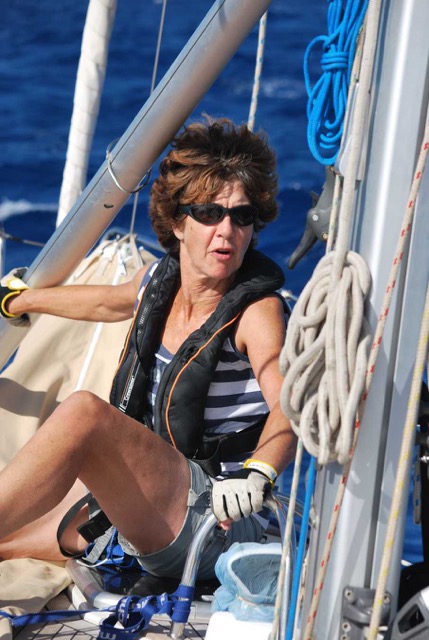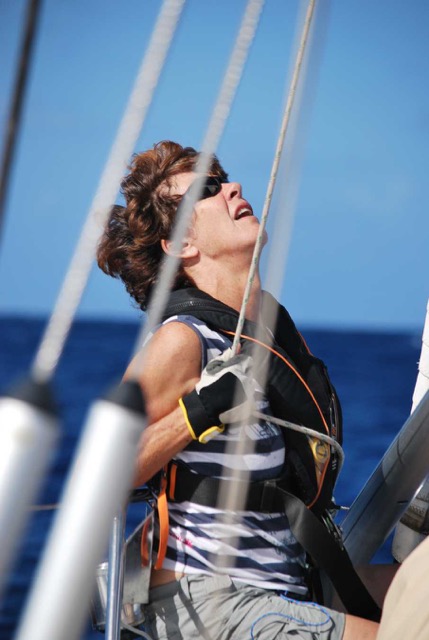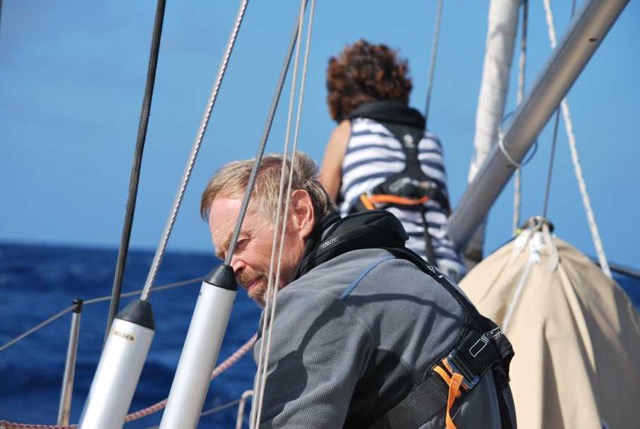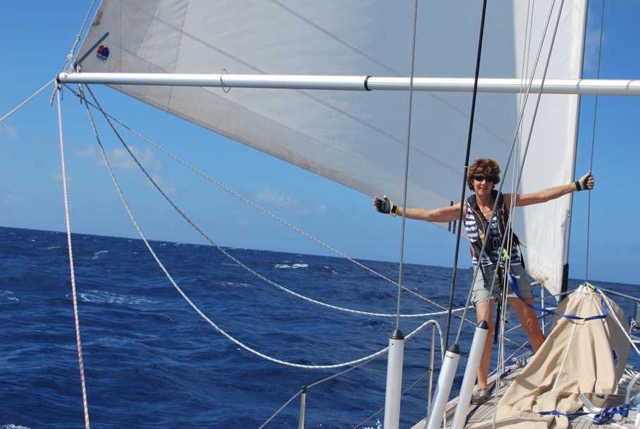Between the Lines

Vega
Hugh and Annie
Wed 20 Jan 2016 13:30
| After a while time is no longer related to activity at home and instead revolves around life on board. If we weren’t keeping the dates in the ship’s log referenced to the day of the week we would have no idea which day we were in at any time. There are only a few occasions when the day of the week becomes relevant such as whether customs and immigration are likely to be open if arriving in Antigua on a Sunday. Our diaries are referenced to dates but the days merge into a continuum such that if backtracking our entries it can be very difficult to sequence activity by reference to a day or date. It takes a while to morph from home time into Vega time and the transition can be painful with feelings of homesickness for loss of daily familiarity. Recently there has been a change in Steven’s demeanour. Initial enthusiasm to get the most speed out of the boat with regular sail changes was replaced by a more sanguine approach that involved reading and listening to music. This was a marked change and it transpired that it was due to a realisation that we would get to Antigua in time for his return flight home! Now, of course, the looming prospect of a hot shower and restaurant meal and even an earlier flight home is having the reverse effect - the full transition to Vega time is unlikely on a trip of limited duration even if, by home time, a long one at four weeks. For me one of the most striking features of sailing the Atlantic is the amount of weed there is floating on the surface of the water. It is a coarse, spiky, greenish brown plant that appears to be living an untethered floating life. Initially a bit of a pain as we had to clear it from the Duogen turbine from time to time there are now thick mats of it that continuously foul the turbine to the extent that we cannot recharge the batteries without running the engine. This has coincided with the batteries discharging at an alarmingly fast rate - we can lose 20% of the charge in a few hours. The problem is compounded by a new charge regulator that was fitted in Lanzarote when the yard was sorting out the connection for the solar panel. They broke the connection for the solar panel to the existing regulator and fitted a separate regulator. Apparently a separate regulator can be a good thing but now the new regulator bleeps loudly when the batteries are discharging and the lower the level of charge in the batteries the longer the duration of the warning bleeps - which is not good for anyone trying to sleep above the regulator. It seems to be managing all the charging activity for the batteries rather than just the solar panel. I need to email the yard and find out what they have fitted before we get to Antigua and try and resolve things. The other night the battery charge fell to 75% and the auto helm bleeped its own low power warning and switched itself off. This has never happened before but at the same time the Mastershunt panel that shows the status of the batteries glowed red and gave a low voltage warning whilst also switching itself off! Again this has never happened before and seems odd given that when we bought the boat we were advised never to let the charge fall below 65% and the RYA recommends maintaining at least a 50% charge level. Three of the four batteries are five years old although one is the emergency backup for the engine and has never been used. The fourth is an additional battery fitted in May last year. Maybe some of the batteries need replacing…………… In order to control the various sails, pole and boom preventer we need a total of 21 control lines on Vega. Not all will be required at the same time and a few do not run aft to the cockpit, but nevertheless when, for example, we have the preventer on the boom and are flying the cruising chute and poled out genoa at the same time there are 16 lines that are controlled from the cockpit. Given that we have only four winches and have never previously sailed with more than two sails at a time or a pole we do not have enough dedicated stoppers, jammers or whatever to secure each of the lines off the winches and allow quick release when required. The cockpit looks like a spiders web these days and when you factor in at least one line having to be led across from one side of the cockpit to another to secure it this, combined with the bungees from the wheel to the cockpit sides to hold it securely in place when using the Hydrovane, means that movement for and aft in the cockpit is tricky and could be dangerous. Antigua is supposed to be the best place in the Caribbean for running repairs and maintenance so another trip to the chandlery is in prospect. One thing you do notice on extended sailing passages is just how much wear and tear some of the lines and equipment endure. Most of our lines are coming up for five years old and whilst “tired” looking lines may be ok for day sailing out of a UK marina they spell trouble when in daily use out on the ocean. We have already had to replace the cruising chute halyard, mainsail halyard and genoa furling line. Sources of friction and chafe are no longer a nuisance, they are now unacceptable and so, for example, we will be adding pulley wheels to the stanchions for the genoa furling line to run through rather than through the metal eyes on the stanchions as currently. A further issue is that we leave most of the lines reeved and ready for use. This seemed to be a good way of having them readily to hand for quick attachment. However, we constantly find that after hoisting a new sail or whatever lines have become twisted, tangled or wrapped around something untoward and particularly if they have been altered for one purpose without thinking through the consequences for another. We may remove all but the basic permanently attached lines and reeve the others only as and when required.     |